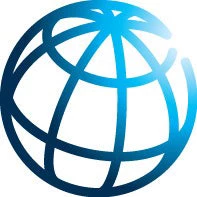
Visit the AppsForClimate website
Together with last week's announcement of the Apps for Climate Competition, the World Bank released a series of interactive climate maps that visualize the wealth of climate data recently made available for download in open formats (here and here).
This is part of the World Bank’s efforts to both expand our open data resources and to do more with data visualizations and maps. The Climate for Development site mashes up open data from the recently updated Climate Change Knowledge Portal and many other sources into maps that communicate the links between development and climate change. These maps can all be freely embedded into other sites (just like adding a YouTube video) by grabbing the embed code provided. Interactive visualizations can be powerful tools to help non-profits, journalists, and policy makers more easily understand large amounts of sophisticated data. Together, the combination of visualization and sharing tools can advance the discussion of the significance of climate change—and what to do about it.
Telling complex stories with maps
Climate for Development uses state-of-the-art data visualization tools built by DevelopmentSeed (see design notes here). It starts with a global map of projected annual temperature change in 2100 using the “B1” IPCC scenario. As you move the cursor over the map, a popup display shows projected changes by month at that grid point, compared to the historical average. This ability to drill down into the data is tremendously helpful to understand how climate change impacts vary not only for different regions, but different seasons—for example, not only hotter summers but shorter winters. Subsequent maps show how those changes could impact food security, natural disasters, and efforts to address both. With 14,850 grid points, and four data series of 12 months at each of those points, the temperature map aggregates over 700,000 data points into an easy-to-manage display.
Projected temperature changes by the year 2100, scenario B1.
Open data
The map layers on Climate for Development have been tailored for that specific site. However, the site also provides all source data for free download, as part of the World Bank’s expanding open data collection. Map data can be accessed raw as shapefiles or through the Tile Mill API if existing map visualizations are to be reused.
Building capacity
Climate for Development is just the “tip of the iceberg” for what we think can be done with open climate data, and in the coming months, we hope that others will do a lot more. The World Bank’s Apps for Climate Change competition is intended to encourage just that. We hope that together, the datasets published on Open Data Resources for Climate Change and the competition will inspire new ideas using open data to address climate change and development, and inspire greater efforts to make more climate change data public and accessible. We will be talking more in the next couple of weeks about climate data and the competition. Follow @worldbankdata for more details about our climate data work.


Join the Conversation